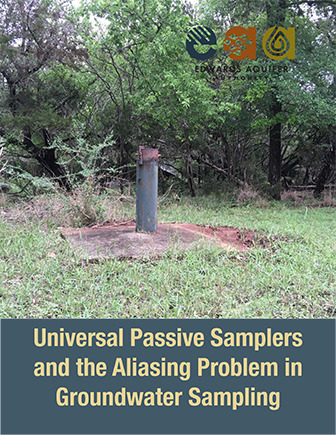Universal Passive Samplers and the Aliasing Problem in Groundwater Sampling

| Author | Steve Johnson and Gizelle Luevano |
| Year | 2018 |
| Description | AY-68-29-418 (Rio Seco) was selected for this study because it is within the Recharge Zone of the Edwards Aquifer surrounded by urban development, and water samples contain consistent PCE concentrations. AY-68-29-418 was sampled eight times to determine the correlation between PCE concentrations from universal passive samplers and water quality grab samples. EAA field staff exchanged the universal passive samplers every 48 hours, one universal passive sampler for one-hour exposure time, and two universal passive samplers for ten days exposure time. During each retrieval of universal passive samplers, EAA field staff also obtained a grab sample. |
| Publisher | Edwards Aquifer Authority |
| Location | San Antonio, Rio Seco, Edwards Aquifer |
| Cover | View Download |
| File | View Download |
| Summary |
|
The Edwards Aquifer Authority (EAA) evaluated the role of passive sampling devices for improving the collection of representative samples for its water quality monitoring program. The purpose of this study was to investigate the use of universal passive samplers to overcome aliasing which reflects the inability of grab samples to capture a complete record of groundwater contaminant concentrations. Monitoring well (AY-68-29-418, Rio Seco) was sampled with universal passive samplers with exposure times of one hour, 48 hours, and ten days. Grab samples were collected after each exposure period. Tetrachloroethene (PCE) was detected in all of the universal passive samples; total petroleum hydrocarbon (TPH) was detected in 80% of the samples; benzene, toluene, ethylbenzene, and xylenes (BTEX) was detected in 33% of the samples; toluene was detected in 26% of the samples; chloroform was detected in 20% of the samples; and benzene was detected in 7% of the samples. Only PCE was detected in the grab samples. These findings indicated that universal passive samplers can detect contaminants at lower concentrations than grab samples, and the PCE concentrations were directly proportional to exposure time rather than the maximum concentration in the groundwater. Consequently, universal passive samplers only partially overcome aliasing by indicating the presence or absence of contaminants in groundwater. |
Search for Documents
Advance Search
Explore EAA's Scientific Reports
- All Reports
- Hydrology and Hydrogeology
- History
- Groundwater Recharge, Recharge Zone
- Groundwater Movement
- Geomorphology and Caves
- Weather Modification
- Geology
- Water Use and Conservation
- Geochemistry
- Water Resources Planning and Management
- Floods and Drought
- Water Quality
- Climatology
- Surface Water / Groundwater Relationship
- Biology
- Springs, Groundwater Discharge
- Archaeology
- RZ Protection
- Aquifer Levels
- Remote Sensing
- Precipitation
- Overview Studies
- Modeling
